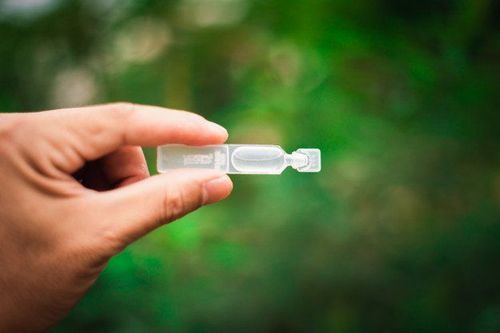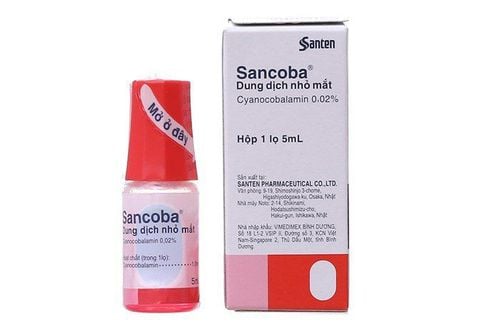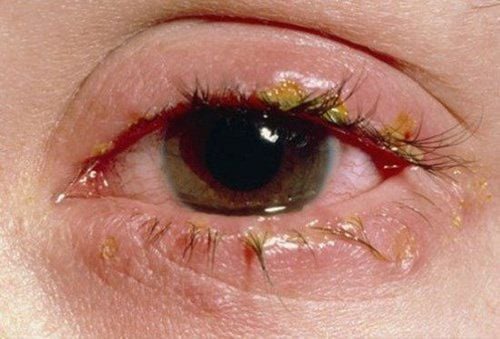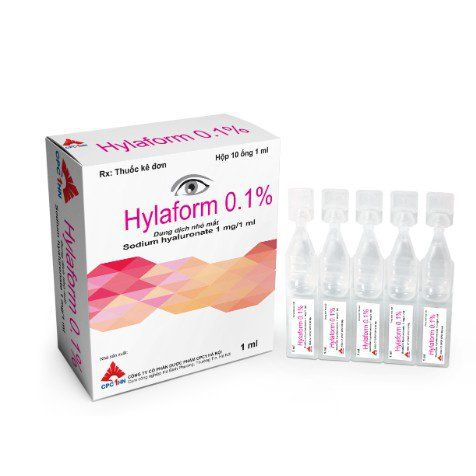This is an automatically translated article.
Itchy eyelids are symptoms caused by any condition that causes irritation, inflammation, or infection of the eyelids. Allergies, infections, and even lack of sleep can cause you to experience itching around your eyelids. Among them, blepharitis is a common cause of eyelid pain and itching. Blepharitis usually does not affect vision, and most resolves on its own within a few days.
1. Common symptoms of blepharitis
Blepharitis can affect both men and women of different ages. However, some cases, such as staphylococcal blepharitis, usually affect mainly women (80% of cases). Blepharitis is a manageable and fairly common condition, with reports reporting that half of patients presenting with ocular disease present with symptoms of blepharitis.
Blepharitis is divided into two types based on the location of the lesion on the eyelid.
Anterior blepharitis: inflammation occurs at the base where the eyelashes grow. Posterior blepharitis: more common, occurs when the sebaceous (Meibomian) glands on the underside of the eyelids become inflamed. Blepharitis is usually easy to recognize because it causes eye irritation, symptoms of blepharitis are often worse in the morning. In addition to itching around the eyelids, blepharitis can be accompanied by the following symptoms:
Swelling, heat, and redness of the eyelids Pus, or discharge, Scaling of the eyelids Clumping sensation in the eyes Red or burning eyes Sensitivity with light Blurred vision , which usually improves with blinking These symptoms could be signs of a more serious eye infection, you should see an ophthalmologist for proper treatment.
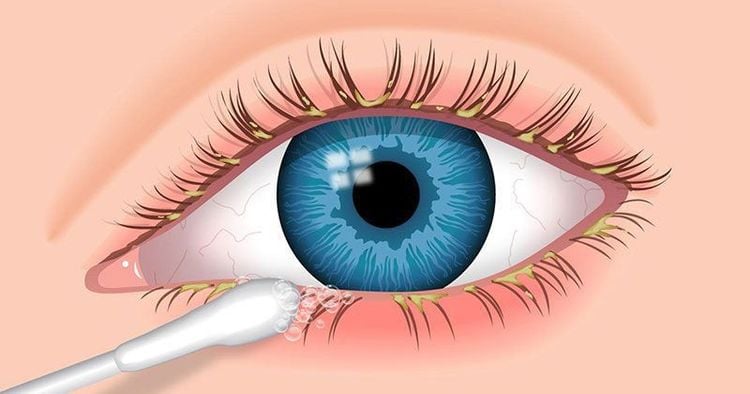
Người bệnh có thể gặp tình trạng sưng nóng đỏ mi mắt khi bị ngứa mi mắt
2. Complications of blepharitis
Blepharitis is not a dangerous disease, but if not treated in the long term, it can lead to vision loss and some of the following complications may occur:
Affects eyelashes. Blepharitis can cause eyelashes to fall out or grow abnormally (extra-orbitus). Affects eyelid skin. Scars develop on the eyelids from long-term blepharitis. The lash line can be turned inward or outward. Watery or dry eyes. Unusual discharge or crusting in the eyelids. Phony eye . A stye is an infection that develops near the base of the eyelash, causing a painful lump at the edge of the eyelid. Warts most often appear on the upper eyelid. Patchwork eyes . Chalazion occurs when there is a blockage in one of the sebaceous glands at the edge of the eyelids just behind the eyelashes, causing the gland to swell and become red. Chronic pink eye. Blepharitis can cause recurrent pink eye (conjunctivitis). Corneal damage. Ongoing irritation from inflamed eyelids or misaligned eyelashes causes sores on the cornea. Dry eyes can increase the risk of a corneal infection.
3. Causes of blepharitis
It is not always possible to pinpoint the exact cause of blepharitis, but some of the following risk factors increase the risk of developing blepharitis:
Seborrheic dermatitis Eyelid infection Sebaceous gland blockage in eyelids Allergies, including allergic reactions to eye drops, contact lenses, or makeup Dry eyes Eyelash lice Side effects
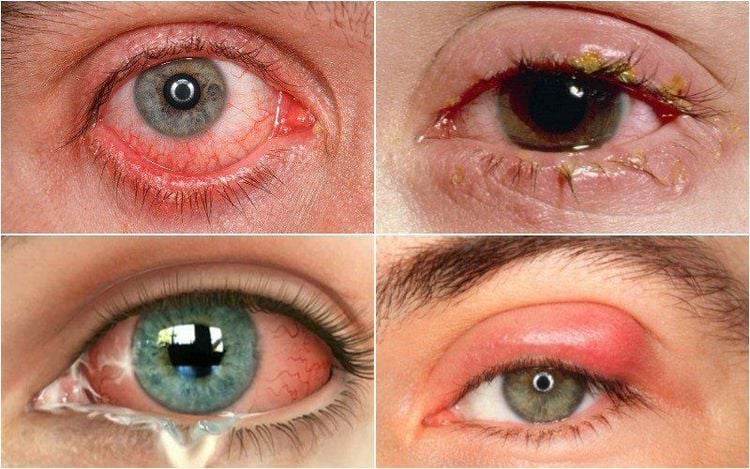
Nhiễm trùng mi mắt có thể khiến bạn bị ngứa mi mắt
4. Some remedies for blepharitis
Self-care measures, such as eyewash and warm compresses, are important treatment needed for most cases of blepharitis.
Eyelid hygiene is very important in the treatment of blepharitis and should be maintained even after symptoms have improved. Cleaning is done 2-4 times per day if in an outbreak stage and 1-2 times per day when the disease is under control.
During treatment, you should avoid known allergens and do not use makeup around the eyes such as eyeliner, mascara.
Treatment of blepharitis includes:
Apply warm compresses, which help to loosen the scaly deposits on the eyelids. Place the warm cloth over the inflamed eyelid, always keep the cloth at the right temperature, and apply it for about 10 minutes. You should use a soft towel and avoid rubbing it hard to hurt the eyelids. Gently massage eyelids with clean fingertips. Eyelid hygiene: use an eyelash cleanser or you can use diluted baby shampoo to wash away the greasy scales at the base of the eyelashes. Rinse your eyelids with warm water and gently pat dry with a clean towel. Use artificial tears. Artificial tears will help fight dry eye caused by blepharitis, preferably one that does not contain preservatives. Depending on the severity of your blepharitis and whether the cause is an infection, your doctor may prescribe antibiotics and steroid eye drops or ointment.
Avoid rubbing or scratching your eyelids, which can lead to more irritation.
Blepharitis and eyelid itching are quite common, although easy to control, if left untreated for a long time can cause serious complications and reduce vision. You can treat the disease with home care measures such as cleaning your eyes, applying warm compresses, massaging your eyes and using artificial tears.
At Vinmec International General Hospital, customers can examine and treat eye diseases with a team of experts and doctors with many years of experience. With the support of a system of modern medical equipment, Ophthalmology is currently the choice of the majority of customers for examination and treatment here.
Please dial HOTLINE for more information or register for an appointment HERE. Download MyVinmec app to make appointments faster and to manage your bookings easily.





